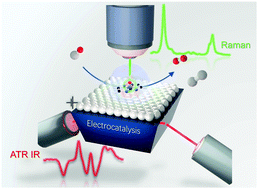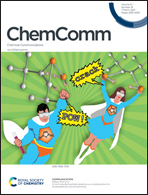Understanding active sites in molecular (photo)electrocatalysis through complementary vibrational spectroelectrochemistry
Abstract
Synthetic molecular (photo)electrocatalysts have been intensively studied due to their capability to drive key energy conversion reactions. In order to advance their potential through rational development, an in-depth mechanistic understanding of the catalytic reactions is required. In this article, we highlight in situ vibrational spectro-electrochemistry, specifically, confocal Raman and infrared absorption spectroscopy, as a highly capable method for obtaining profound insights into the structure and reactivity of electrode-immobilised molecular catalytic systems. Commonly employed experimental configurations for carrying out in situ studies and conditions for operating in the surface-enhanced mode are presented. This is followed by selected research examples to showcase the different aspects and features of molecular (photo)electrocatalysis that can be visualised by vibrational spectroelectrochemistry. Presented target systems include porphyrin-based systems, polypyridyl-based complexes as well as phthalocyanine-based two dimensional conjugated metal–organic frameworks, and photoactive conjugated polymers. The article concludes with a critical assessment of current limitations of the techniques and gives a brief outlook on anticipated future developments.

- This article is part of the themed collection: (Photo)electrocatalysis for renewable energy


 Please wait while we load your content...
Please wait while we load your content...